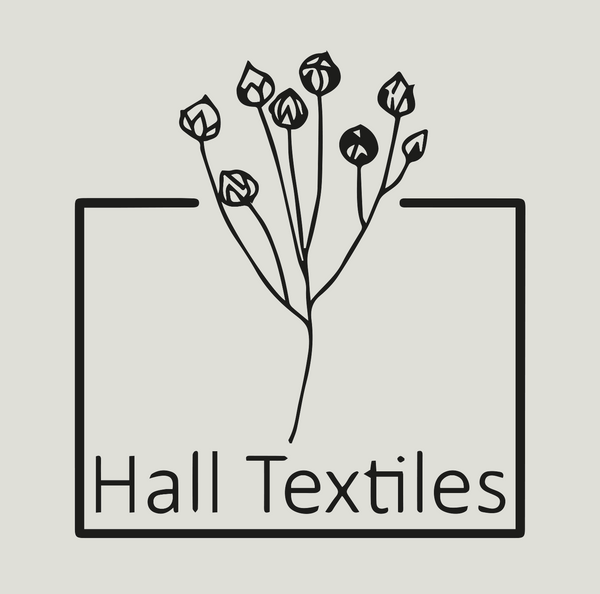INFOS/FAQ'S
Qu’est-ce que l’impression réactive et ses impacts environnementaux?
Impression réactive
L’impression réactive est un processus en plusieurs étapes formulé pour l’impression sur des tissus naturels. Il comporte quatre étapes principales : le prétraitement des tissus, l’impression, la fixation à la vapeur et le lavage.
Le prétraitement consiste à enduire les tissus à l’aide d’un procédé finement ajusté qui raidit le tissu et aide à lier l’encre. Une fois enduits, les tissus sont imprimés numériquement avec des encres réactives utilisant des profils de couleur adaptés à chaque tissu. C’est rapide et incroyablement précis! L’encre CMYK traduit l’œuvre d’art en millions de minuscules gouttelettes qui sont appliquées à partir des têtes d’impression technologiquement avancées. Après l’impression, le tissu se déplace lentement à travers une chambre de vapeur chauffée à 102 degrés Celsius qui ouvre les cellules de la fibre.
C’est un long processus, mais ça en vaut la peine! Tous les tissus imprimés avec un procédé réactif sont entièrement lavables sans décoloration et parfaitement doux et prêts à l’emploi.
Impact de l’impression réactive sur l’environnement
L’impression réactive est un processus à faible niveau de déchets. Chaque tissu est imprimé pour un client spécifique. Les tissus qui impriment mal peuvent simplement être lavés et réimprimés. La machine à laver réemploi l’eau pour minimiser son utilisation.
Conformité et sécurité, certificat OEKO TEX standard 100
Si un textile porte le certificat STANDARD 100, vous pouvez être certain que chaque composante de cet article, c.-à-d. chaque fil, bouton et accessoires a été testé pour les substances nocives et que l’article est donc inoffensif en termes d’écologie humaine. Le test est réalisé par un institut partenaire OEKO-TEX® indépendant sur la base d’un catalogue complet de critères OEKO-TEX®. Dans le test, ils tiennent compte de nombreuses substances réglementées et non réglementées, qui peuvent être nocives pour la santé humaine. Dans de nombreux cas, les valeurs limites de la NORME 100 dépassent les exigences nationales et internationales. Le catalogue des critères est mis à jour au moins une fois par an et enrichi de nouvelles connaissances scientifiques ou d’exigences légales.
Il n’est pas facile pour les fabricants et les clients de garder une vue d’ensemble de la situation juridique concernant les substances nocives tous les jours. Les experts des instituts OEKO-TEX® le font pour vous.
…………………………………………………………………………………….
What is Reactive Printing and its environmental impacts?
Reactive Printing
Reactive printing is a multistep process formulated for printing on natural fabrics. It involves four main steps: pre-treating fabrics, printing, steaming and washing.
The pre-treatment involves coating fabrics using a finely tuned process that stiffens the fabric and helps bond the ink. Once coated, the fabrics are digitally printed with reactive inks using colour profiles suited to each fabric. It’s quick and insanely accurate! The CMYK ink set translates artwork into millions of tiny droplets that are applied from the technologically advanced print heads. After printing, steaming is where the magic happens! The fabric slowly moves through a steam chamber heated to 102 degrees Celsius which opens the fiber’s cells. Once opened, the ink can transfer into the fibers. After steaming the print will be at maximum vibrancy and colour depth. The last step is washing to remove all excess inks and residual pre-treatment. The fabric passes through 3 different temperature baths with special detergents and finishers to wash and significantly soften the fabrics.
It’s a long process but it’s worth it! All fabrics printed with a reactive process are fully washable with no fading and perfectly soft and ready to use.
Environment Impact of Reactive On-demand Printing
Reactive printing, is a low waste process. Since every meter is printed for a specific customer, I never have overstock or deadstock. Fabrics that print incorrectly can simply be washed and reprinted. The washing machinery recirculates water to minimize water usage.
Compliance and Safety, OEKO TEX standard 100 certificate
If a textile carries the STANDARD 100 certificate, you can be certain that every component of this article, i.e. every thread, button and accessories has been tested for harmful substances and that the article therefore is harmless in human ecological terms. The test is conducted by a independent OEKO-TEX® partner institute on the basis of a extensive OEKO-TEX®. In the test they take into account numerous regulated and non-regulated substances, which may be harmful to human health. In many cases the limit values for the STANDARD 100 go beyond national and international requirements. The criteria catalog is updated at least once a year and expanded with new scientific knowledge or statutory requirements. It is not easy for manufacturers and customers to keep an overview of the legal situation concerning harmful substances every day. The experts from the OEKO-TEX® institutes do this for you.
